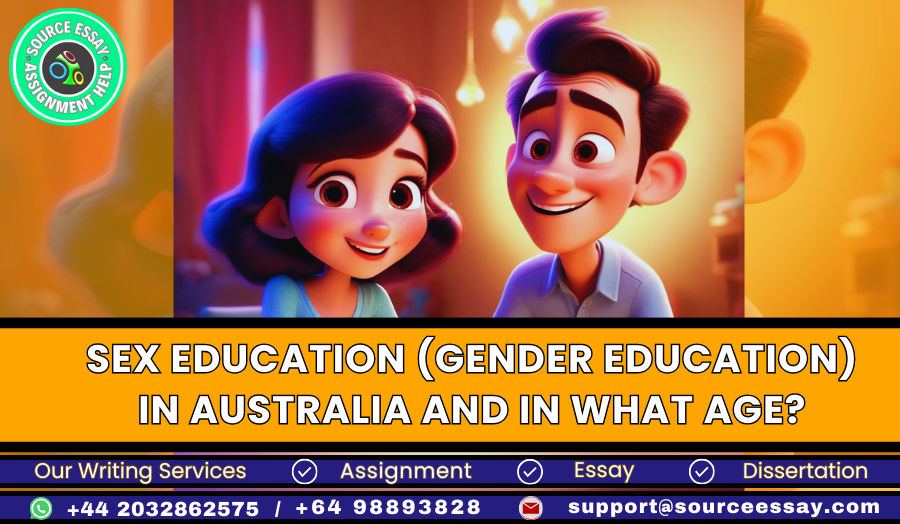Introduction
Worldwide, there is heated controversy about whether or not sex education should be required in schools and, if so, at what age. Comprehensive sex education, according to proponents, assignment help Melbourne and is essential for lowering hazardous behaviours and increasing sexual health among youth. Discussing when, how, and to what degree sex education needs to be introduced in schools can be difficult by worries about cultural sensitivity, and age-appropriateness, including parental engagement.
Discussion
Importance of comprehensive sex education
Promoting sexual health, wellness, and informed decision-making among persons of all ages requires comprehensive sex education. In contrast to programs that simply teach assignment help Hobart and chastity until marriage, complete sexual education teaches students to understand human sexuality, how to become pregnant, how to avoid sexually transmitted infections, how to give and receive consent, and how to have healthy relationships.
Encouraging people to make educated decisions about their sexual well-being as well as their conduct is a crucial part of comprehensive sex education. The goal of sex education is to empower learners to make informed decisions about their own and other people’s health by teaching them about sexual anatomy, various methods of contraception, and how to avoid sexually transmitted infections (STIs) (Astle et al., 2021). Having this information empowers individuals to make informed decisions about their sexual health and wellness, which in turn decreases the likelihood of unwanted pregnancies and sexually transmitted infections.
Furthermore, tackling the problems of sexual assault and consent requires comprehensive sex education, which is essential in the fight for gender equality. To combat negative gender stereotypes and encourage positive perspectives on sexuality and connections, sex education teaches students the value of open dialogue, respect, and permission in sexual interactions (Mbarushimana et al., 2023). Furthermore, by addressing the prejudice and stigma that surrounds sexuality and orientation, comprehensive sex education may help build a community that is welcoming and accepting of LGBTQ+ people.
Along with fostering healthy sexual attitudes and actions, comprehensive sex education aids in youth growth and general health. Comprehensive sex education increases the likelihood that students would postpone sexual activity, utilize contraception if they start to become sexually inclined and establish better relationships than solely on abs or no sexuality education at all, according to research.
Finally, it is crucial to provide people with thorough sex education so they may make educated choices about their sexual wellness and partnerships. Sex education improves sexual health, lessens the likelihood of adverse health consequences, and helps individuals and societies thrive by disseminating factual, evidence-based knowledge in an accepting and welcoming environment.

Figure 1: Sex education statistics
(Source: experience.arcgis, n.d)
Determining the appropriate age
When deciding on an age to begin comprehensive sex education, several elements must be taken into account, such as assignment help Sydney and cognitive development, cultural standards, and community values, among others. Although there is no universally accepted method, most professionals believe that sexuality instruction should begin in the late elementary years or early teenage years, well before sexual activity begins.
Individuals are more open to learning about relationships and sexuality throughout the late childhood and early adolescent years, when they are often between the ages of 10 and 14, since they are going through substantial emotional and cognitive growth (Lameiras-Fernández, et al., 2021). Curiosity in one’s own body and potential inquiries regarding sexuality and reproduction are common among adolescents. Giving thorough sex education at this formative time may help children develop positive views and practices around consent, relationships, and sexuality.
Nevertheless, sex education programs must be customized to meet the unique cultural and developmental requirements of each student (Goldschmidt-Gjerløw, 2022). When planning sex education lessons, teachers should think about their students’ ages, linguistic abilities, and background knowledge, among other things.
Implementing effective sex education programs
- Successful sex education program implementation requires an all-encompassing strategy that caters to students’ varied needs, involves stakeholders, and cultivates a nurturing classroom setting (Nash and Browne, 2021). Creating a curriculum based on evidence that addresses a variety of issues, such as physique, puberty, contraception, sexually transmitted infection prevention, approval, and healthy relationships, is an important part of successful implementation. The curriculum ought to be suitable for the students’ age, take into account their cultural backgrounds, and welcome a wide range of personalities and experiences.
- The effective implementation of sex education programs also depends on properly educating and supporting instructors (Sondag et al., 2022). Professional development for educators should focus on sex education best practices, including how to make the classroom a welcoming and safe place for all students, how to have respectful conversations about difficult issues without passing judgment, and how to create an inclusive learning environment.
- To cultivate support and cooperation, it is essential to include parents and caregivers in the execution of sex education programs. Sex education is an important topic, and institutions should have an open dialogue with families about it (Guerra-Marmolejo et al., 2021). They should also answer any questions or concerns parents may have and provide them with tools to keep the discussion going at home.
- In addition, sex education programs may benefit from collaborations with healthcare practitioners, community groups, and additional stakeholders since these groups can provide accessibility to more resources, knowledge, and assistance. Schools may better promote sexual health and wellness in their communities by working with other organizations to include sex education in larger initiatives.
Conclusion
It can be concluded that there is no simple answer to the delicate and complicated topic of whether or not schools should expand sex education and, if so, at what age. It is important to carefully analyse varied viewpoints and cultural norms to establish common ground on the methods of execution and age appropriateness of comprehensive sexual education, even though there is a rising agreement on its relevance. By emphasizing sex education programs that are inclusive and grounded in science, we can equip students to make educated choices regarding their sexual well-being and overall health. This, in turn, will lead to better communities and societies.

